Studies On Residential Power Line Noise - Part 6: PS Audio Soloist Special Edition

DarqueKnight
Posts: 6,765
Introduction
The PS Audio (PSA) limited edition Soloist Premier SE is a "wall mounted surge protection and resolution enhancement device" that incorporates passive noise filtering and the Power Port Premier (P3) audio grade AC receptacle. The Soloist Premier improves upon the standard Soloist with the addition of an upgraded AC receptacle, higher grade capacitors and other tweaks that PSA does not wish to divulge. PSA is offering the Soloist Premier at $250 (while supplies last).
The February PS Audio A/V Journal states that, due to much better than anticipated demand, they have decided to make the Soloist Premier part of their regular product line. No price was given for the regular production Soloist Premiers, the journal only stated that "for now, we'll keep the price low and see how it goes".
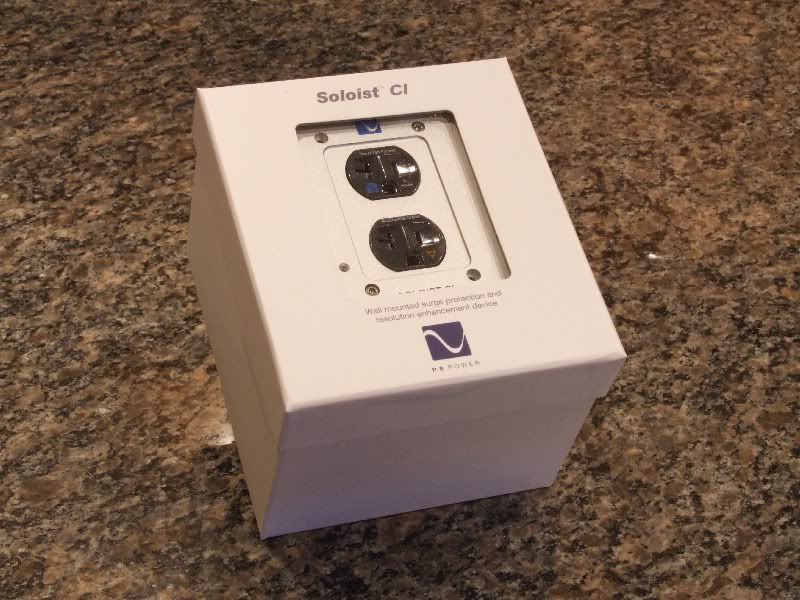
Figure 1. The Soloist comes in nice "gift box" type packaging. Thoughtful touches like this enhance the
audiophile experience. If PSA decides to put the Soloist SE into full production, they should consider a
new box with a little gold trim...like the Power Port Premier box. The "CI" stands for "Custom Installation".
Owners of the regular Soloist have reported very good results after retrofitting them with the P3. So much so that PSA decided to look into it as a potential product offering. Rick Cullen (www.cullencircuits.com) offers a PSA approved upgrade of the regular Soloist to Soloist Premier standards for $130.
From the PS Audio website:
"This is not just the Soloist, but a limited edition Soloist built around the Power Port Premier AC receptacle. Each of these are hand built, some by Paul himself, and hand tweaked for best performance. We are limiting this run to 200 pieces because of the extremely low price and when they're gone, that's it. The special edition Soloist Premier is only $50 higher than a standard Soloist but with the addition of a $100 Power Port Premier, hand installed and tweaked. The Soloist is the only in-wall full featured power conditioner made."
Evaluation Procedure
Power is supplied to my two channel system by three dedicated 20 amp AC circuits. One circuit powers a PS Audio Power Plant Premier AC regenerator which then powers the line level and phono preamplifiers and source components. The other two circuits power the Parasound Halo JC 1 monoblock power amplifiers. Prior to the Soloist evaluation, all AC circuits were terminated with PS Audio Power Port Premier AC receptacles.
Listening evaluations were conducted with two Soloist Premiers as follows:
1. Soloist on right power amp circuit compared to Power Port Premier on left power amp circuit.
2. Soloist in Power Plant Premier circuit and both power amps fed through Power Port Premiers.
3. Soloist in each power amp circuit.
The Soloists were not installed in the wall during the first 75 hours of evaluation. They were laid on boxes of sufficient height and connected to the wall wiring.
Measurements were taken during a weekday afternoon with a Tektronix 2012 TDS oscilloscope.
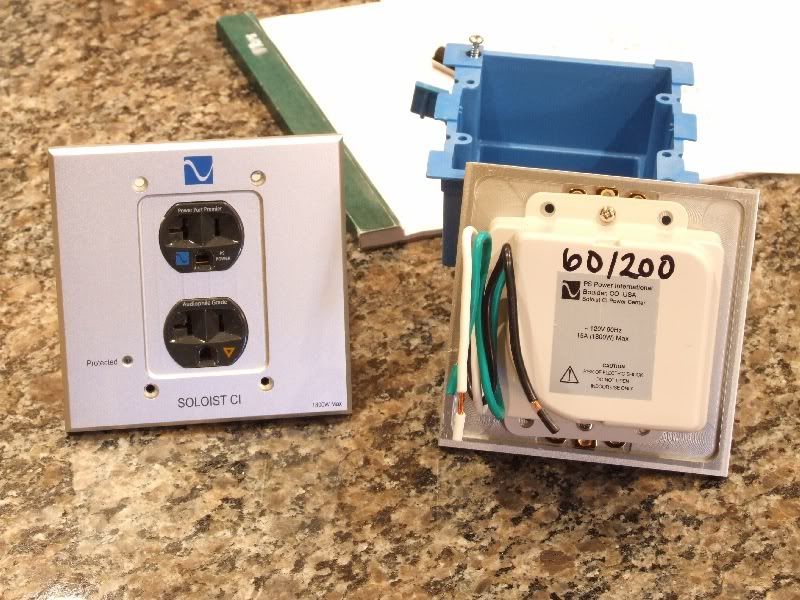
Figure 2. Limited edition run of 200 units. Some hand built by PSA CEO Paul McGowan. I might send
mine back to get signed.

Figure 3. The Soloist Premier faceplate is 3/8" thick milled aluminum.

Figure 4. Soloist Premier SE inside.
I was interested in switching the Soloist's Power Port Premier receptacles with the broken in Power Port Premiers I already had. I changed my mind when I saw the inordinate amount of desoldering and soldering that would have been required. Fortunately, the Soloist didn't take long to break in.
Measurements
Bear in mind that these are simple and relatively crude measurements taken outside of a laboratory environment. Nevertheless, they provide some quantitative insight into the Soloist's performance. I will leave the more rigorous laboratory testing to the interested meter pontiff.

Figure 5. Sine wave plot of power from right side Power Port Premier.

Figure 6. Sine wave plot of power from right side Soloist Premier SE.

Figure 7. FFT plot of power from right side Power Port Premier.

Figure 8. FFT plot of power from right side Soloist Premier.
The differences between the sine wave and Fast Fourier Transform plots of the Soloist SE and the Power Port Premier are somewhat obscure unless you are able to flip back and forth between them using graphics software. The FFT plot of the Soloist (figure 8) shows an overall flatter and lower amplitude noise spectrum. The sine wave plot of the power through the Soloist (figure 6) displays less flattening in the peaks due to more noise being filtered out. While the difference in normal mode noise near 60 Hz was slight, the differences in common mode noise was significant.
From the PS Audio website:
"The Soloists power coupler reduces common and differential mode noise by up to 40 dB, meaning that whatever noise is on the line will be reduced by over 100 times."
Common mode noise reduction is important because electronic equipment is 10 to 100 times more sensitive to common mode noise than normal mode noise (noise between line (hot) and neutral). I do not have the proper test apparatus at home to measure differential mode noise. The common mode noise (noise between neutral and ground) is easily measured with an oscilloscope. Figures 9 and 10 show the differences in common mode noise between a regular residential grade outlet and the Soloist SE on one of the amplifier's AC circuits.
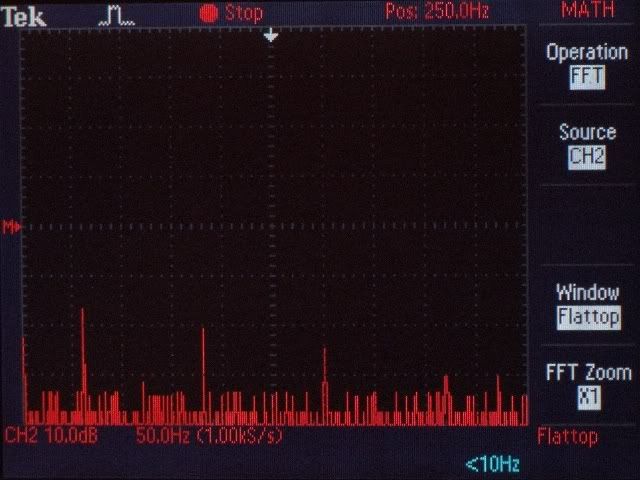
Figure 9. FFT plot of common mode noise from regular receptacle.
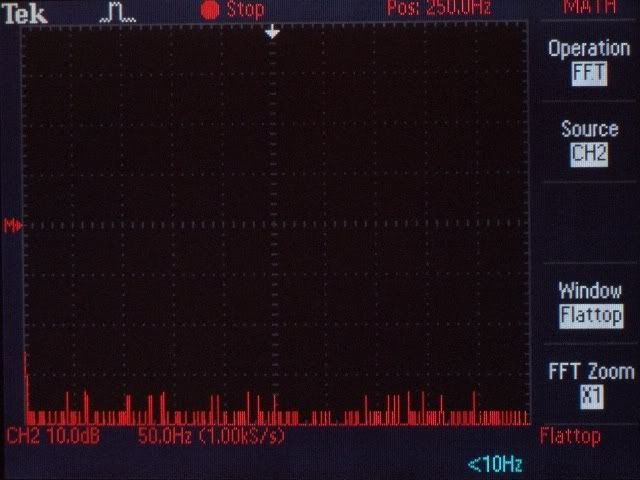
Figure 10. FFT plot of common mode noise from Soloist Premier.
The common mode noise from the Soloist Premier was immeasurable as it was identical to the background noise in the oscilloscope. PS Audio arrived at their 40 dB common mode noise reduction figure by injecting a noise signal on the AC line and measuring its attenuation by the Soloist.
I assume that the filtering of common and differential mode noise is the reason why the Soloist Premier makes Such Good Sound.
Soloist Effect On Power Plant Premier
The noise content of the PPP's output power was diminished by being fed through a Soloist rather than a Power Port Premier. However, I did not hear a difference or improvement in the sound. The differences between figures 11 and 12 are difficult to discern when comparing them side by side. When I switched between the two plots with my graphics software, the Soloist's lower noise output was easily seen. This AC circuit also has my wireless networking equipment on it.

Figure 11. FFT plot of power from Power Plant Premier feed by Power Port Premier.
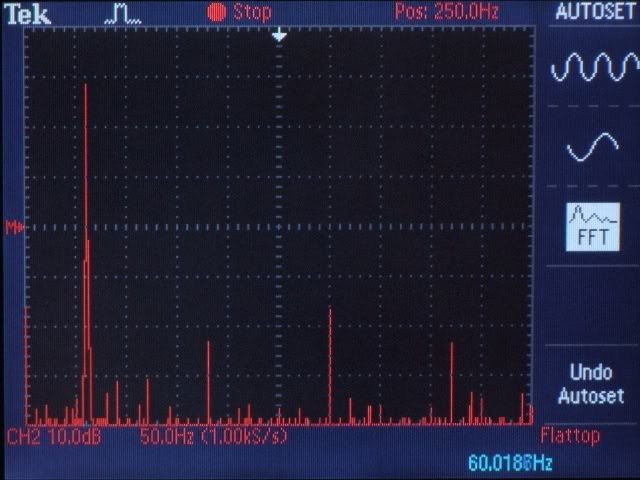
Figure 12. FFT plot of power from Power Plant Premier feed by Soloist Premier SE.
The PS Audio (PSA) limited edition Soloist Premier SE is a "wall mounted surge protection and resolution enhancement device" that incorporates passive noise filtering and the Power Port Premier (P3) audio grade AC receptacle. The Soloist Premier improves upon the standard Soloist with the addition of an upgraded AC receptacle, higher grade capacitors and other tweaks that PSA does not wish to divulge. PSA is offering the Soloist Premier at $250 (while supplies last).
The February PS Audio A/V Journal states that, due to much better than anticipated demand, they have decided to make the Soloist Premier part of their regular product line. No price was given for the regular production Soloist Premiers, the journal only stated that "for now, we'll keep the price low and see how it goes".

Figure 1. The Soloist comes in nice "gift box" type packaging. Thoughtful touches like this enhance the
audiophile experience. If PSA decides to put the Soloist SE into full production, they should consider a
new box with a little gold trim...like the Power Port Premier box. The "CI" stands for "Custom Installation".
Owners of the regular Soloist have reported very good results after retrofitting them with the P3. So much so that PSA decided to look into it as a potential product offering. Rick Cullen (www.cullencircuits.com) offers a PSA approved upgrade of the regular Soloist to Soloist Premier standards for $130.
From the PS Audio website:
"This is not just the Soloist, but a limited edition Soloist built around the Power Port Premier AC receptacle. Each of these are hand built, some by Paul himself, and hand tweaked for best performance. We are limiting this run to 200 pieces because of the extremely low price and when they're gone, that's it. The special edition Soloist Premier is only $50 higher than a standard Soloist but with the addition of a $100 Power Port Premier, hand installed and tweaked. The Soloist is the only in-wall full featured power conditioner made."
Evaluation Procedure
Power is supplied to my two channel system by three dedicated 20 amp AC circuits. One circuit powers a PS Audio Power Plant Premier AC regenerator which then powers the line level and phono preamplifiers and source components. The other two circuits power the Parasound Halo JC 1 monoblock power amplifiers. Prior to the Soloist evaluation, all AC circuits were terminated with PS Audio Power Port Premier AC receptacles.
Listening evaluations were conducted with two Soloist Premiers as follows:
1. Soloist on right power amp circuit compared to Power Port Premier on left power amp circuit.
2. Soloist in Power Plant Premier circuit and both power amps fed through Power Port Premiers.
3. Soloist in each power amp circuit.
The Soloists were not installed in the wall during the first 75 hours of evaluation. They were laid on boxes of sufficient height and connected to the wall wiring.
Measurements were taken during a weekday afternoon with a Tektronix 2012 TDS oscilloscope.

Figure 2. Limited edition run of 200 units. Some hand built by PSA CEO Paul McGowan. I might send
mine back to get signed.

Figure 3. The Soloist Premier faceplate is 3/8" thick milled aluminum.

Figure 4. Soloist Premier SE inside.
I was interested in switching the Soloist's Power Port Premier receptacles with the broken in Power Port Premiers I already had. I changed my mind when I saw the inordinate amount of desoldering and soldering that would have been required. Fortunately, the Soloist didn't take long to break in.
Measurements
Bear in mind that these are simple and relatively crude measurements taken outside of a laboratory environment. Nevertheless, they provide some quantitative insight into the Soloist's performance. I will leave the more rigorous laboratory testing to the interested meter pontiff.

Figure 5. Sine wave plot of power from right side Power Port Premier.

Figure 6. Sine wave plot of power from right side Soloist Premier SE.

Figure 7. FFT plot of power from right side Power Port Premier.

Figure 8. FFT plot of power from right side Soloist Premier.
The differences between the sine wave and Fast Fourier Transform plots of the Soloist SE and the Power Port Premier are somewhat obscure unless you are able to flip back and forth between them using graphics software. The FFT plot of the Soloist (figure 8) shows an overall flatter and lower amplitude noise spectrum. The sine wave plot of the power through the Soloist (figure 6) displays less flattening in the peaks due to more noise being filtered out. While the difference in normal mode noise near 60 Hz was slight, the differences in common mode noise was significant.
From the PS Audio website:
"The Soloists power coupler reduces common and differential mode noise by up to 40 dB, meaning that whatever noise is on the line will be reduced by over 100 times."
Common mode noise reduction is important because electronic equipment is 10 to 100 times more sensitive to common mode noise than normal mode noise (noise between line (hot) and neutral). I do not have the proper test apparatus at home to measure differential mode noise. The common mode noise (noise between neutral and ground) is easily measured with an oscilloscope. Figures 9 and 10 show the differences in common mode noise between a regular residential grade outlet and the Soloist SE on one of the amplifier's AC circuits.

Figure 9. FFT plot of common mode noise from regular receptacle.

Figure 10. FFT plot of common mode noise from Soloist Premier.
The common mode noise from the Soloist Premier was immeasurable as it was identical to the background noise in the oscilloscope. PS Audio arrived at their 40 dB common mode noise reduction figure by injecting a noise signal on the AC line and measuring its attenuation by the Soloist.
I assume that the filtering of common and differential mode noise is the reason why the Soloist Premier makes Such Good Sound.
Soloist Effect On Power Plant Premier
The noise content of the PPP's output power was diminished by being fed through a Soloist rather than a Power Port Premier. However, I did not hear a difference or improvement in the sound. The differences between figures 11 and 12 are difficult to discern when comparing them side by side. When I switched between the two plots with my graphics software, the Soloist's lower noise output was easily seen. This AC circuit also has my wireless networking equipment on it.

Figure 11. FFT plot of power from Power Plant Premier feed by Power Port Premier.

Figure 12. FFT plot of power from Power Plant Premier feed by Soloist Premier SE.
Proud and loyal citizen of the Digital Domain and Solid State Country!
Post edited by DarqueKnight on
Comments
-
Performance And Installation Concerns
I had some concern about current limiting and constriction of dynamics due to the Soloist Premier SE's passive filtering. PS Audio says there is no current limiting with the Soloist. I was abjured by Parasound not to put any active or passive circuitry between the JC 1's and the wall because there would be trouble. Not major trouble, but trouble enough with sound staging, imaging, details, and dynamics. I did experience such trouble when I tried to run a single JC 1 from a Power Plant Premier (report here). The JC 1 is capable of drawing current transients of up to 135 amps. How can 135 amps be drawn on a 20 amp circuit? It's easy if the main breaker panel is rated for 200 amps or more and the current transient lasts for a small fraction of a second. Such high level, short duration transients are one of the contributing factors to the realism of reproduced music.
I also had some concern about the Soloist's 15 amp rating. This reply from Bob Stadtherr, PS Audio's engineering vice president, clarified things:
"The 15A rating has more to do with the National Electric Code. The code allows several receptacles to be connected to a single circuit breaker, thus they will not allow any single device to draw the entire load. Some current has to be reserved for other devices plugged into the same circuit, so any one device can only draw 80% of the total. Since the Soloist is considered a power conditioner appliance, it is rated differently from a plain receptacle, and the current specified is for the load rating not the circuit rating.
A receptacle on a 20A circuit would be allowed to have 16A (80%) maximum load connected to it. Honestly we thought a 16A label would cause even more confusion than 15A so we specified it as 15A."
The Soloist's requirement for wall modification prevents some people from trying them. They were easy to install in my two newer AC circuits because the single gang wallboxes were secured to the wall with expandable flanges. Removing them was as easy as turning the retaining screws counter-clockwise and then pulling them out of the wall (see figure 13). Installing a Soloist in these locations only entailed enlarging the hole with a drywall saw and installing the double gang wallbox (double J-box). It took 15 minutes per Soloist. I had to make sure that only a minimum amount of the stiff Romex wire from the circuit extended into the wallbox. A bunch of this stiff wire, along with the large yellow twist caps, behind the Soloist's bulky rear would have interfered with the Soloist's complete insertion in the wallbox.
The Soloist did not provide an audible improvement when installed in the Power Plant Premier's AC circuit. If it had, replacing the receptacle wallbox on that circuit would not have been trivial since it is nailed to a stud. If it had turned out that I wanted to install a Soloist on that circuit, I would have cut a new hole near the existing outlet and ran Romex wire from the existing outlet to the Soloist's wallbox.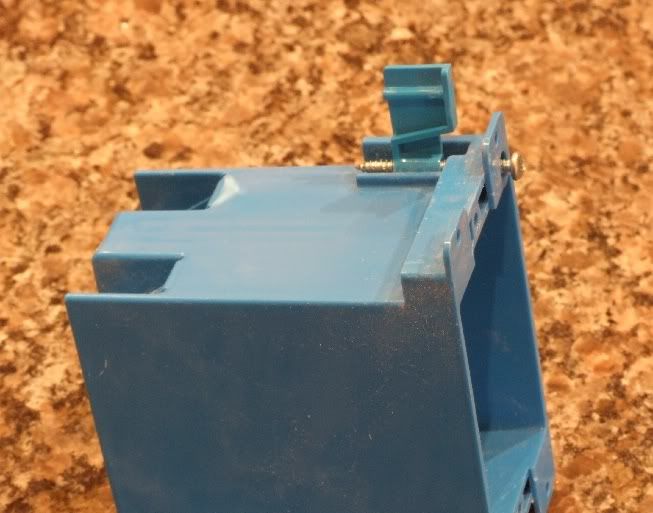
Figure 13. Aftermarket electrical wallboxes are easy to install and remove. Turning
the upper and lower screws clockwise raises the retaining flanges and draws them
toward the wall.
PS Audio is considering the development of a "plug-in" Soloist version for situations where wall modification is either not allowed or is too difficult. There is no word on when, if ever, this version will be available.Proud and loyal citizen of the Digital Domain and Solid State Country! -
Listening Evaluation
Of course, the degree of benefit received from a power line noise reduction device will depend on how "dirty" the power is to begin with. My voltage is stable and the noise content and harmonic distortion is relatively low. In addition to this, the Soloist comes after extensive noise reduction measures such as multiple dedicated AC circuits, low noise power and signal cabling, regenerated AC power and vibration abatement. After these measures, I did not have high expectations for further significant electrical noise reduction via this passive filtering device. The Soloist SE's sonic improvement over the Power Port Premier was immediately heard in some aspects, but I was not initially "wowed" as some have been. The immediate audible improvement between the Soloist Premier and the Power Port Premier was not as great as that between the regular Power Port and the Power Port Premier. Vibration abatement devices provided a much bigger immediate improvement.
The first thing I noticed immediately after installation was a lowered noise floor on the right side as evidenced by apparently higher sound level. My preamp's volume control has approximately 1 dB step adjustments. In order for the sound level to be balanced between the left side Power Port Premier and the right side Soloist Premier SE, I had to decrease the sound level on the right by 4 dB. The regular Power Port sounded veiled compared to the Power Port Premier. Likewise, the Power Port Premier sounded slightly veiled in comparison to the Soloist Premier.
At the time of this evaluation, the Power Port Premiers had over 1000 hours of continuous current through them. In most aspects, the newly installed Soloist Premier on the right side sounded better than the Power Port Premier on the left. Overall clarity, spatiality, image weight, detail and tactile sensation were enhanced. In the bass region, there was an overall "softness". Bass slam, articulation, definition and detail were diminished. This was unexpected. It was as if I had traded bass quality for higher resolution in the midrange and treble. During my Power Port Premier evaluation, I compared a broken in regular Power Port on the left amplifier to a newly installed Power Port Premier on the right amplifier. The improvement in bass performance was the biggest immediate audible change.DarqueKnight wrote: »The right channel P2 was replaced with a P3 and monophonic program material was compared between the left and right channels. The right side was apparently a little louder, indicating a lower noise floor, and the bass was more tactile and defined. Bass instruments had a heavier and more articulate "growl" component. The midrange and treble was also a little clearer.
I might have been "wowed" if I had gone from a regular household outlet to a Soloist Premier or from a regular Power Port to a Soloist Premier or if my power were dirtier to begin with. Furthermore, if I wasn't a bass connoisseur and always on the lookout for well defined macro and micro growls, well delineated layers of bass texture, sharp bass transients and that elusive tactile quality referred to as "bass slam", then the Soloist Premier's initial bass performance would not have been so disappointing.
I assumed that the Soloist's additional wire, capacitors, etc. were dragging its bass performance down and that it would improve with break in. If it didn't, the Soloists were going back.;) During the evaluation of the Power Port Premier receptacles, I noted that their sound continued to improve for the first 150 hours.
When the Power Port Premier was installed, it was such an improvement over the regular Power Port that I quickly replaced all the Power Ports in my two channel and home theater systems. My reservations about the Soloist Premier's bass performance precluded such enthusiastic adoption.
Figure 14. The Soloist Premier SE hangs out for a while. It needed some soak time before it enticed me
to enlarge the holes in my wall.
After 50 hours, the bass had improved considerably and I had some glimmer of hope that it was going to work out. After 75 hours, the bass that I'd grown accustomed to started creeping back in. At this point I installed the Soloists in the wall. Immediately after installation, the overall sound became clearer and the bass tightened up a bit. I also began to hear details in familiar recordings that I hadn't noticed before, such as the different varieties of concurrent rumble and growl in Barry White's voice.
At the 100 hour mark, the Soloist's had been used 50 hours for playing music at a moderate level (85-90 dB-C) and had 50 hours of idle current (2 amps continuously) running through them. At this point, the Soloists' performance had significantly surpassed that of the Power Port Premier in every aspect except bass performance.
After 150 hours, I still wasn't "back home" in the bass department, but the "fire" and "slam" I had been missing was starting to return. The Soloist's literature claims that it will not restrict current or constrict dynamics. Indeed, my power amps now sounded more dynamic and lifelike with the Soloists in the power chain.
After 175 hours, the Soloist Premier's bass performance equaled that of the Power Port Premier and exceeded it at 200 hours. At 225 hours I noticed more bass slam, more bass definition and more finely detailed bass growl. At 250 hours I heard more background details in the center and center rear of the sound stage.
At the time of this report, The Soloist Premiers had been in use for over 380 hours (192 hours playing music and 188 hours with 2 amps of amplifier idle current running through them). I did not hear further improvements after the 250 hour mark.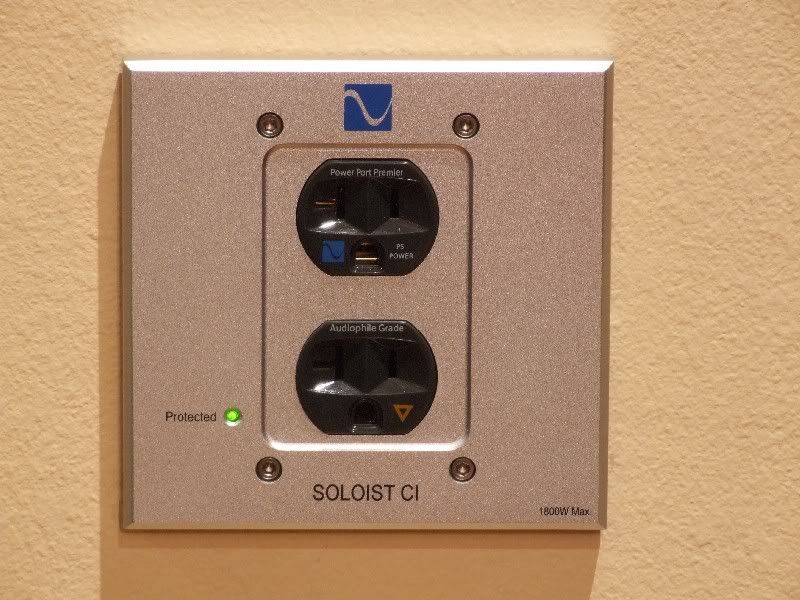
Figure 15. The Soloist Premier SE was somewhat of a slow starter, but eventually earned its keep.
Conclusion
I considered some other, more elaborate, more sophisticated, more $$$$, passive filtering options for my power amplifiers, but they all required dealing with additional metal boxes and additional power cords. PSA, in addition to providing a more elegant and lower cost alternative, also provided incentive in the form of quantitative performance data and details on how the Soloist worked. The money back-no questions asked guarantee also helped.
Follow Up
A follow up report will discuss results from installing a Soloist Premier for the plasma television in my home office and for the subwoofer in my home theater. I am waiting fulfillment of the order for those Soloists due to PS Audio running out of Power Port Premiers.:(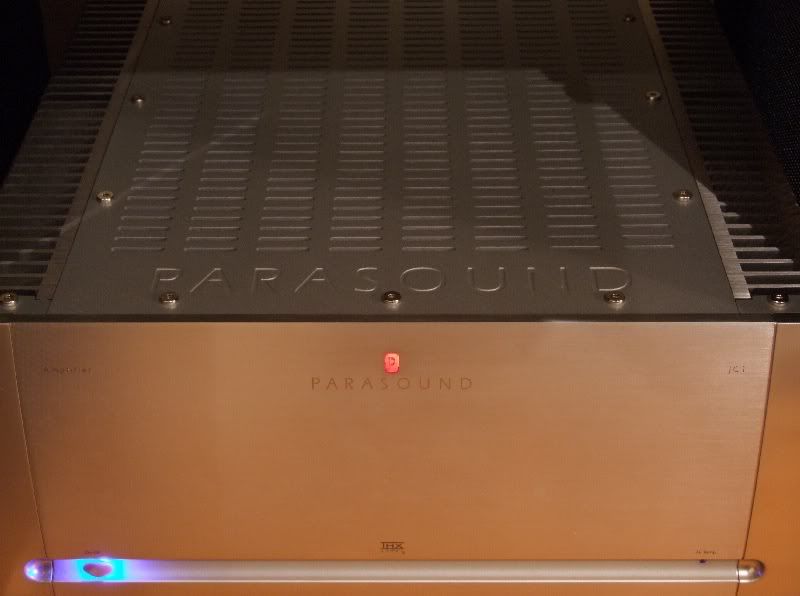
The JC 1's are happy about the recent addition power line noise filtering, but would be happier with a
dedicated and optimized residential transformer from the power company.
The monoliths are beginning to think that bigger and badder
monoblock amps aren't really necessary.
Associated Equipment
01. Pass Laboratories X0.2 Preamplifier
02. Pass Laboratories Xono Phono Preamplifier
03. Parasound Halo JC 1 Monoblock Amplifiers
04. Teres Audio Model 255 Turntable with Acid Etched Holographic Mylar Turntable Belt (DIY), Sonic Purity Concepts and Design Reflex Record Clamp, Graham Phantom B-44 Tonearm, Ortofon MC Windfeld Cartridge
and Teres Audio Reference II Turntable Motor
05. Cary Audio CD 306 Professional Version SACD Player
06. Polk Audio SDA SRS 1.2TL Speakers (Hot Rodded)
07. Audioquest LeoPard Tonearm Cable
08. Audioquest Sky XLR Interconnects
09. Audioquest Everest Speaker Cables
10. Signal Cable MagicPower Cord for Turntable Power Supply
11. PS Audio Premier SC Power Cords For Amplifiers and SACD Player
12. PS Audio Statement SC Power Cord for Power Plant Premier
13. PS Audio Power Plant Premier Power AC Regenerator for Source Components
14. PS Audio Soloist Premier SE In-Wall Power Conditioners for Power Amplifiers
15. PS Audio Power Port Premier AC Receptacle for Source Component AC Circuit
16. Three Dedicated 20 Amp AC Circuits
17. Black Diamond Racing Mk4 Cones, Mk4 Mini Black Holes and Jumbo Pits Isolation Devices
18. Salamander Designs Synergy Triple 30 Audio Credenza
References
PS Audio Power Port Review
Studies On Residential Power Line Noise - Part 1
Studies On Residential Power Line Noise - Part 2
Studies On Residential Power Line Noise - Part 3 - PS Audio Power Plant Premier
Studies On Residential Power Line Noise - Part 4- PS Audio Premier SC Power Cord
Studies On Residential Power Line Noise - Part 5- PS Audio Power Port PremierProud and loyal citizen of the Digital Domain and Solid State Country! -
Soloist Premier SE Results With Plasma Television
I have two Samsung HP-S4273 42" Plasma HDTV's, one in my home office and one in my master bedroom. Each television is connected to a Sony DVP-S9000ES DVD player. The TV in the master bedroom is connected to a PS Audio Power Plant Premier and has a much clearer, smoother and more film-like picture than the one in the home office, which is plugged into the wall. Installing a Soloist Premier behind the home office's TV immediately resulted in a little more color vibrancy and detail on standard DVD's and a moderate increase in color vibrancy and detail with high definition TV programs. When I compared high resolution screen shots of a still DVD image, the picture was also slightly brighter with the Soloist SE. The picture with the Soloist SE was much better than running from the wall, but not as smooth and detailed as with the Power Plant Premier.
Figure 16. A quick, easy install and CNN-HD looks much better. By the way, I saved handsomely (over $600) by installing the patch panel, outlet and TV bracket myself. These kind of projects make me feel like a real electrician.
Figure 17. Such Good Picture.
Soloist Premier SE Results With Home Theater Subwoofer
My results running the SVS PB12 Ultra/2 subwoofer from a Power Plant Premier are here.DarqueKnight wrote: »I gave the SVS PB12 Ultra/2 subwoofer a little taste of regenerated AC. I heard increased bass clarity and definition with both music and movie low frequency effects. The improvement was not as significant as with the MicroPro 4000, but it was very noticeable on music and moderately noticeable on movies. However, even if the difference had been night and day, placement of the PPP in a location where it would be reasonably close to the sub, yet reasonably isolated from vibrations, would have proved challenging. The PB12 Ultra/2 generates too much shake, rattle, rumble, and roll to place a sensitive electronic component anywhere near it.
Based on the modest improvement for movies plus the placement issues, I really could not justify a PPP for the HT subwoofer.
Due to the modest subwoofer improvements with the PPP, I was not expecting big things from the Soloist. Even if there were no audible improvements, the sonically uncompromising surge protection provided by the Soloist would be worth the expense and effort.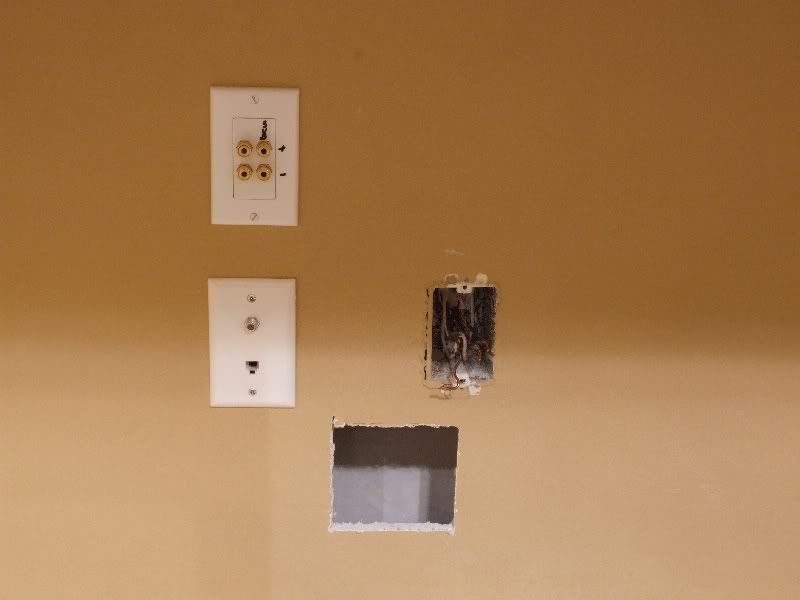
Figure 18. Easy install below an existing outlet.
There was no way I was going to go through the grief of removing the existing single gang box, which was secured to a wall stud. I simply removed one of the punch-out holes in the bottom of the existing wallbox and ran a short piece of 12-2 Romex to the Soloist's wallbox.
Figure 19. It took longer to clean up and put up my tools than it did for the install.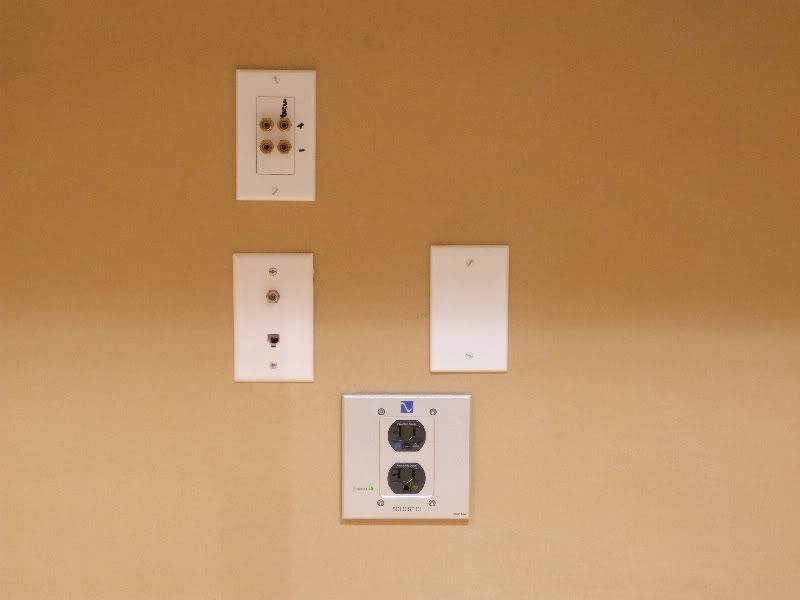
Figure 20. Finished in 20 minutes.
The Power Port in the existing outlet was removed and the wires were connected together with twist caps. When I move to my next house, the process will be reversed: A residential grade outlet will be installed in the single gang wallbox and the Soloist will be removed and its wallbox covered with a wall plate.
Subwoofer Listening Evaluation
The subwoofer sounded apparently much louder due to the lowered noise floor provided by the Soloist. I needed to recalibrate the subwoofer by decreasing the output level by 3 dB. I did not hear an apparent change in the subwoofer's sound level with the PPP.
Subwoofer With Music
I was very surprised at the increase in bass weight, speed and slam immediately provided by the Soloist SE. The increase in speed provided better integration with the smaller, faster drivers in my home theater's front speakers.
I did not hear an immediate improvement in the sub's clarity and detail as I did when it was powered by the Power Plant Premier. Indeed, the PB12 Ultra/2's bass articulation, definition and detail were initially diminished by the Soloist, but not to the degree that I heard with the JC 1 amplifiers. Of course, the plate amplifier of the PB12 Ultra/2 is not as detailed, nimble and agile as the JC 1's, so there was comparatively less damage to be done.
Bass articulation, definition and detail had significantly improved after 12 hours of music and 24 hours of the IsoTek burn-in CD. I thoroughly enjoyed the enhanced subtle rumble coming through the floor, my seat, and my arm rests. I expected things to sound even better after the Soloist had burned in for a couple hundred hours. However, since I seldom listen to music on the home theater system, I did not do further critical listening evaluations after 36 hours.
Subwoofer With Movies
Once the subwoofer's level had been properly re-calibrated, the bass was balanced with the other speakers but the increased tactile sensations still felt like I had added another sub. This was a good thing.:)
Soloist vs. Power Plant Premier
I wondered why there was such a disparity between the PB12's performance with the Soloist and PPP. In the case of the JC 1 amplifiers, the PPP was stressed by the high current demands. I did not expect that the PB12's plate amplifier (a 1000 watt hybrid Class AB/Class D BASH (Bridged Amplifier Switching Hybrid) design) would stress the PPP, but that might have been the case.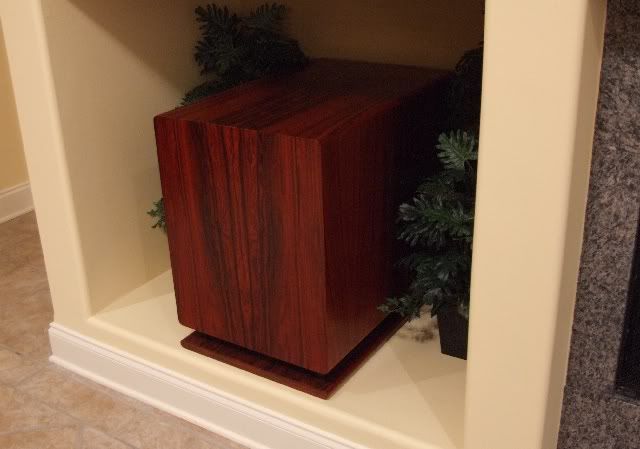
The bass beast is more refined, yet hits harder with the Soloist SE.Proud and loyal citizen of the Digital Domain and Solid State Country! -
Reserved For Follow UpProud and loyal citizen of the Digital Domain and Solid State Country!
-
Man, I enjoyed that writeup. Thanks for taking the time to do things like this! Tip o' the hat to ya' sir.
 ~ In search of accurate reproduction of music. Real sound is my reference and while perfection may not be attainable? If I chase it, I might just catch excellence. ~
~ In search of accurate reproduction of music. Real sound is my reference and while perfection may not be attainable? If I chase it, I might just catch excellence. ~ -
Introduction
I decided to revisit the use of a Soloist SE between the wall and the PPP. All of my initial trials demonstrated no difference or improvement when a Soloist was placed between one of my PPP's and the wall.
The test rig shown in figure 1 was used to evaluate the Soloist SE between the wall and the PPP's in my two channel, home theater and master bedroom systems. The Soloist was plugged into the P3 receptacles of the respective systems. In every case, no difference whatsoever was heard. Previously, I did note improvements when a Power Port Premier was placed between the wall and the PPP's. However, during the Soloist power amp trials, I also noted that the sound of the Soloist improved when it was installed in the wall. Accordingly, I decided to give the Soloist a fairer chance and install it in the wall.
Figure 1. Soloist SE test rig.
Additional 20 Amp AC Circuit For 2 Channel System
The AC circuit that powers my 2 channel system source components and preamps is also shared by my wireless networking equipment. The AC circuit is terminated by a PS Audio Power Port Premier (P3) and there is a PS Audio Power Plant Premier (PPP) between the P3 and the source components and preamps. The incoming total harmonic distortion with the wireless equipment on was 3.2%. The outgoing THD to the audio components was 0.4%. Prior to installing the PPP, I could hear a small difference in sound quality between having the networking gear on or off. I always unplugged the networking gear during critical listening sessions. After installing the PPP, I could not hear a difference between the networking equipment being on or off.
I figured this would be overkill, but I installed another 20 amp AC circuit just for the source components and preamps. The incoming THD went down to 2.3% and the outgoing THD went down to 0.3%. The noise floor was lowered a bit and the bass sounded a bit faster.
Since times are hard, I did not engage the services of my electrician, who charges $425 to install a new AC circuit. I did this one myself. The holes in the wall were already there from the previous two additional circuits. I just ran the additional wire next to that of the wire for the right side JC 1 amp AC circuit. I removed the JC 1's Soloist and attached a 13 foot length of Romex to the end of the circuit cable. I then pulled this up to the attic and attached the new circuit wire. All this was pulled back down through the outlet opening in the wall. The only difficulty was getting the Romex cable down to the sub panel in my garage. The wall space above the sub panel is crammed with wire and insulation which makes fishing wire a challenge. When the electrician came to install the first additional circuits, he said that, because of the wire congestion, he might have to remove a portion of the drywall to access the top of the sub panel cabinet. He was able, with some difficulty, to run wire for four new AC circuits without having to cut into the wall.
For this run, the hole in the top of the wall was just large enough to insert the Romex and the wall fishing rod. It took two hours to maneuver the end of the cable to one of the unused access holes in the sub panel cabinet top. Things would have gone faster if I had had someone in the attic to push and pull the wire when needed. If I decide to add any additional AC circuits, I will have to cut into the drywall to access the top of the sub panel.
The cost to add the additional AC circuit was $39.61:
$30.97 for 100 feet of 12-2 Romex cable (82 feet were used).
$3.47 for a 20 amp breaker.
$5.17 for a residential grade receptacle. The Power Port Premier that was on the former circuit was replaced with a regular receptacle since the networking equipment did not require a high quality receptacle. The Power Port Premier was placed in storage.
Some Results
With the Soloist in the wall, I heard a further small reduction in the noise floor and a small increase in overall detail. I began hearing subtle percussion details in familiar recordings that I had missed before. There was also an enhanced growl effect to some bass notes.
I will follow up again after the recommended 200 hour break in.
Figure 2. The additional AC circuit and Soloist SE turned out to be worthwhile efforts.
Soloist Premier SE Quality Control Issue
Last month, after installing a Soloist SE, I noticed the green LED was nott lit. A check with a voltmeter showed that I was getting 122 volts out. I thought something was wrong with the LED or the protection circuitry. I emailed PSA customer service about the problem. Then I took the back cover off and this is a picture of what I found: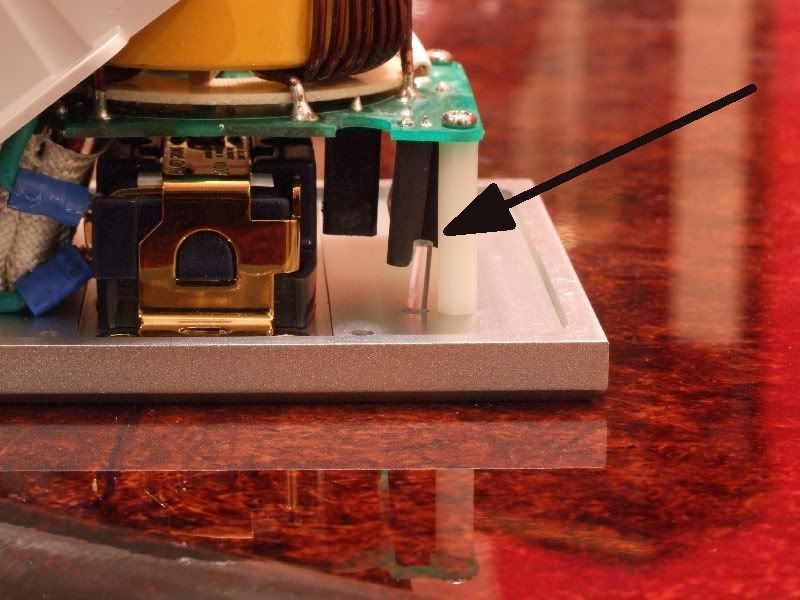
Figure 3. I installed this Soloist and the front panel LED said "look for me".
The black plastic light guide shroud that connects the green LED to the clear plastic lens was on the LED but not on the lens, therefore no green light could be transmitted to the front panel.
I recently ordered two more Soloist SEs and, after installation, no green light. A check with the voltmeter showed that I was getting 122 volts out. This time I had a good idea what the problem was, so I removed the Soloist and took off its back cover. This is a picture of what I found: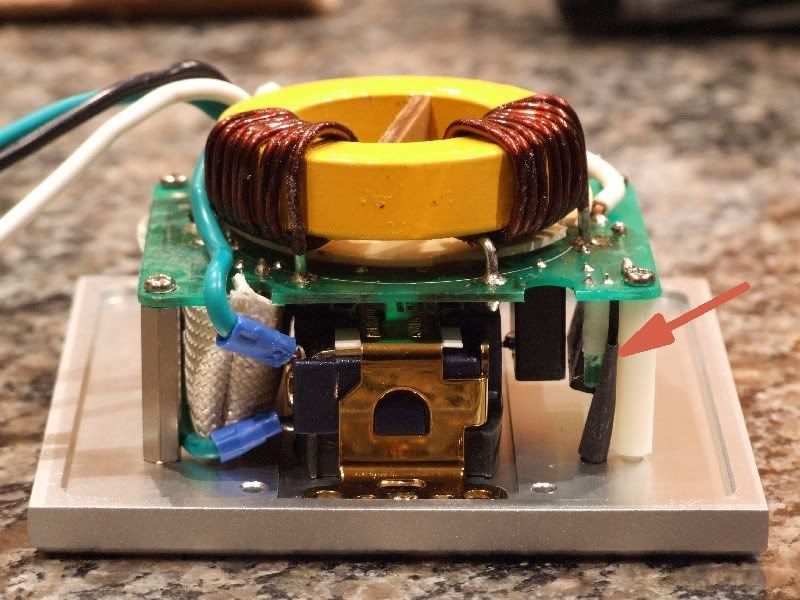
Figure 4. Come on Paul, stop playing hide and seek with the LED display.
This time the shroud was on the LED but not on the lens.
It only took 10 minutes to correct this, but I dont understand why something this obvious was not caught in final inspection and testing. I have six Soloist SEs and two of the six had this problem. I thought you said you were through with tweaking for the rest of the year.
I thought you said you were through with tweaking for the rest of the year.
This isn't something new. It is a scheduled follow up to a previous project.~DKProud and loyal citizen of the Digital Domain and Solid State Country! -
With the Soloist SE in the Power Plant Premier's (PPP) AC circuit, I could not discern the day to day improvements that I heard with the Soloists in the JC 1's AC circuits. I just knew that I liked what I was hearing.
I noted this immediately after installing the PPP's Soloist SE:DarqueKnight wrote: »With the Soloist in the wall, I heard a further small reduction in the noise floor and a small increase in overall detail. I began hearing subtle percussion details in familiar recordings that I had missed before. There was also an enhanced growl effect to some bass notes.
I decided to fall back to the residential grade receptacle located below the PPP's Soloist, then replace that receptacle with a Power Port Premier (P3), then replace the P3 with a Soloist SE.
Figure 1. "Interesting" sound difference: PPP plugged into a residential grade outlet.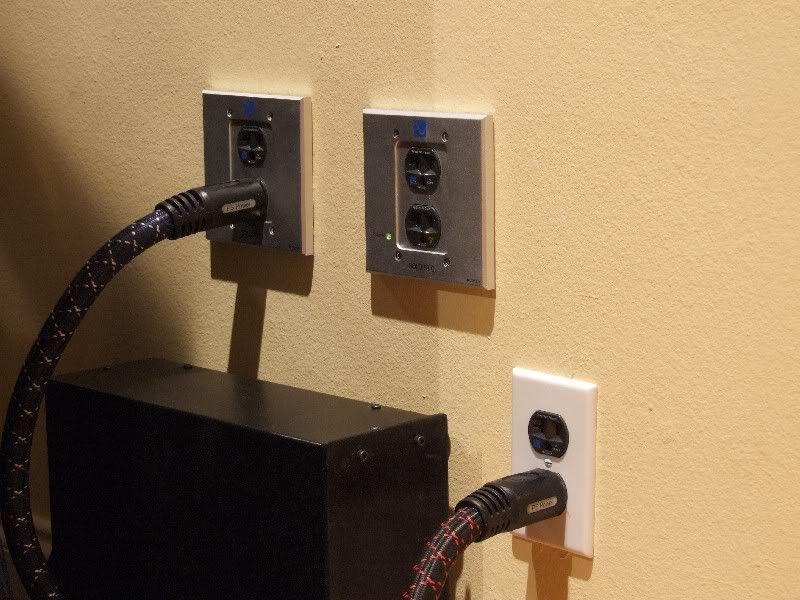
Figure 2. Much, much better: PPP plugged into a Power Port Premier.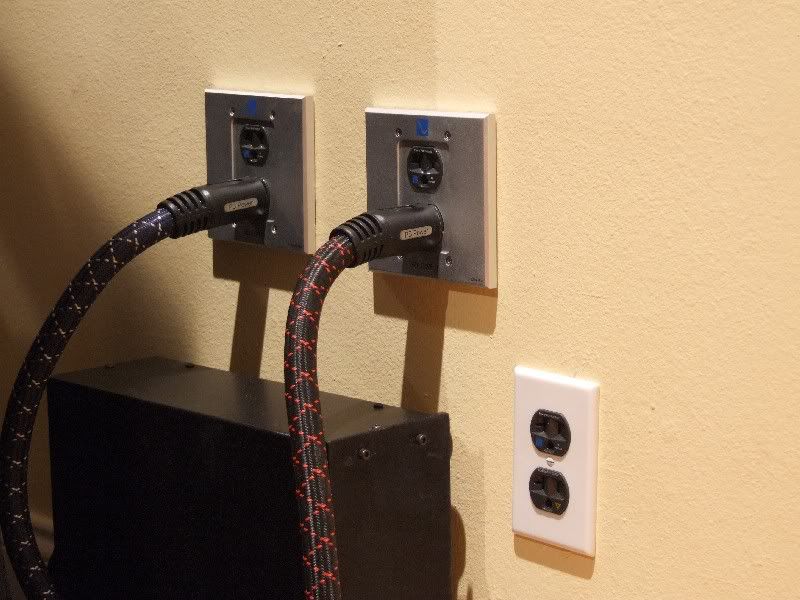
Figure 3. Best by far: PPP plugged into a Soloist Premier SE.
Trial 1: Plugging The PPP Into A Residential Grade Outlet
Going from the Soloist SE to the residential grade outlet produced an "interesting" contrast in sound. The apparent sound level was substantially lowered and the entire sound stage was draped in a veil. Image weight was reduced and the width of the sound stage was diminished by 2 feet on each side. The detail in images at the sides and rear of the sound stage was obscured. The subtle micro growl effects in some bass notes disappeared, although the macro growls were still there, but less well defined.
Trial 2: Plugging The PPP Into A Power Port Premier
Replacing the residential grade outlet with a Power Port Premier restored the sound stage width and improved image weight. Tactile sensations were substantially improved. The sound level was apparently louder and overall detail was significantly improved.
Trial 3: Plugging The PPP Into A Soloist Premier SE
Plugging the PPP into the Soloist SE resulted in a further lowering of the noise floor as evidenced by an increase in apparent sound level. Images within the sound stage increased in weight and overall detail and there was an enhanced sense of three dimensionality and inky black background.
Tactile sensations were further enhanced, particularly in the bass region. The bass micro growls returned and the macro growls were more defined and enhanced.
Conclusion
In my experience, the Soloist Premier really needed its recommended 200 hour break in time. I am biased toward components that start out sounding good and get better with age. The Soloist SE's in my two channel system sounded "passable" upon first installation and steadily improved. The wait time, coupled with the requirement for wall modification, might be a deal breaker for some.Proud and loyal citizen of the Digital Domain and Solid State Country! -
Raife,
Whenever I hear the words "wall modificaiton" my ears perk up and heart beats harder, I am planning a big jump up for my audio so thanks for the information.
RT1 -
reeltrouble1 wrote: »I am planning a big jump up for my audio...
Ted,
Are you going to keep us in suspense??Proud and loyal citizen of the Digital Domain and Solid State Country! -
interesting presentation,
thanks for the write up ! -
DarqueKnight wrote: »Ted,
Are you going to keep us in suspense??
everything in time and remember things are not always what they seem.....especially in the Rabbit Hole.
RT1 -
Very good well writen write up. I wanna thank you for that.
I also use Ps audio but I use the power ports for the theater with a dedicated 20 amp circuit. I have a panamax M5500ex that I use wit a mix of Audioquest and Kimber kable powercords.
DanDan
My personal quest is to save to world of bad audio, one thread at a time. -
Another great writeup.
Thanksengtaz
I love how music can brighten up a bad day. -
i am now in the market for a soloist..just need the pesky electrician neighbor to come thru and finally install my dedicate circuits as promised...i'd also like to hear of a side by side test of the SE and regualr soloist
-
Hogwash!
:DOne of the nicest 4" hoses you can put on your 1/2" water line. -
i am now in the market for a soloist..just need the pesky electrician neighbor to come thru and finally install my dedicate circuits as promised...i'd also like to hear of a side by side test of the SE and regualr soloist
Here's one:
http://archives.psaudio.com/showthread.php?t=4327
Others can be found at Audio Asylum.Proud and loyal citizen of the Digital Domain and Solid State Country! -
what about THE WHOLE HOUSE SURGE PROTECTOR approach, an ideal way for protection. http://www.apc.com/products/category.cfm?id=12&subid=23Godspeed,
D0661E
AVR:Pioneer Elite SC-07
Surrounds: RTis
2channel:Rti100 (carver driven
Sub:SVS PB12-Plus/2
Dedicated AMPs:Adcom GFA535, 2xCarver 1.5t, Carver m1.0t
Wsrn:Hitachi ultra vision LCD60, 32XBR400
PowerConditioner: MonsterC HTS5100
PS3, Toshiba HD A2, etc: SonySACD/ Panasonic gears DIVX.
MR3LIGION: Polkaudio; GSXR; E46; Reeftank;
Odyclub; Xsimulator; Sony; Zune; Canon -
Whole house protection does nothing for cleanup of the AC signal. I used to install them, and they are basically sacrificial protection circuits that trip the mains pretty quick.Please. Please contact me a ben62670 @ yahoo.com. Make sure to include who you are, and you are from Polk so I don't delete your email. Also I am now physically unable to work on any projects. If you need help let these guys know. There are many people who will help if you let them know where you are.
Thanks
Ben -
DK - do you know if the soloist range can be used in a 240v/20amp application?In terms of audio, i truly feel sorry for the visually impaired. How can they know what they like if they cant read google?
http://www.polkaudio.com/forums/showcase/view.php?userid=86838 -
ill tell you what, i managed to find a new one at a good price and after installing it i definitely noticed an immediate improvement in my music and tv picture.....more so over the Belkin power conditioner. I am currently in the works of obtaining a Power Plant Premier. I thank DK for all the very informative, knowledgeable reviews of all these items and if it was not for him i sure as hell would not even dare to spend this type of dinero on obtaining "clean power", but i have seen the light and am no longer a skeptic
-
PSA does not make a 240v Soloist and has no plans to make one.:(
A Solist can be used on a 120v 20 amp circuit.Proud and loyal citizen of the Digital Domain and Solid State Country! -
DarqueKnight wrote: »PSA does not make a 240v Soloist and has no plans to make one.:(
A Solist can be used on a 120v 20 amp circuit.
Not what i wanted to hear DK, but thanks anyway. I did email them but got no reply.In terms of audio, i truly feel sorry for the visually impaired. How can they know what they like if they cant read google?
http://www.polkaudio.com/forums/showcase/view.php?userid=86838 -
Interesting but expensive on a per outlet basis.
I have been looking at something like:
Tripplite LC1800 for ~$250 with 6 outlets
or a higher end choice:
Furman 1800 PF R for ~$499
Is there something I am missing with the PS Audio solution? From the main picture it looks like a rather large RF choke (nothing wrong with that). Just wondering what other components it is made up of. -
more great ideas from junkjunk, why dont you make like an amobea and split you yo-yo. You always have the best idea dont you? Something better? smarter? You are The One, we will notify the Matrix.
Did you even bother to read DK's finding's about the product before your little brain went wild with something else? Is there something you missed?? Smart **** comment like usual, try reading the results.
You are a joke, your not here to add anything, your here to cause trouble and stir the pot.
We do not like you, can you even comprehend that, your not wanted. Go back to your village.
RT1 -
Never mind...:rolleyes:"Appreciation of audio is a completely subjective human experience. Measurements can provide a measure of insight, but are no substitute for human judgment. Why are we looking to reduce a subjective experience to objective criteria anyway? The subtleties of music and audio reproduction are for those who appreciate it. Differentiation by numbers is for those who do not".--Nelson Pass Pass Labs XA25 | EE Avant Pre | EE Mini Max Supreme DAC | MIT Shotgun S1 | Pangea AC14SE MKII | Legend L600 | BlueSound Node 3 - Tubes add soul!
-
reeltrouble1 wrote: »more great ideas from junkjunk, why dont you make like an amobea and split you yo-yo. You always have the best idea dont you? Something better? smarter? You are The One, we will notify the Matrix.
Did you even bother to read DK's finding's about the product before your little brain went wild with something else? Is there something you missed?? Smart **** comment like usual, try reading the results.
You are a joke, your not here to add anything, your here to cause trouble and stir the pot.
We do not like you, can you even comprehend that, your not wanted. Go back to your village.
RT1
Since only one of us is capable of being an adult and having a rational conversation...
Did you mean these findings?:
Conclusion
I considered some other, more elaborate, more sophisticated, more $$$$, passive filtering options for my power amplifiers, but they all required dealing with additional metal boxes and additional power cords. PSA, in addition to providing a more elegant and lower cost alternative, also provided incentive in the form of quantitative performance data and details on how the Soloist worked. The money back-no questions asked guarantee also helped.
So we have product that obviously does something good on cleaning up residential power and I am not allowed to compare a solution that is roughly $125 per outlet to other solutions?
I take it Tripplite and Furman don't have their own EE's that graduated from accredited institutions?
I am asking a serious question: Why should I spend my money on product X vs product Y?
Why is there no comparison to another like power conditioning product? -
RT1, I have come to understand your hate filled invective. You aren't capable of answering a legitimate question. I feel sorry for you:(
-
BooHoo you don't get it. Nobody but a select few like you. You suck, and serve no purpose here. Comeback when you want to share real experiences, or ask serious questions. Till then off to the sand box, and please don't eat the cat turds.
Thanks again.
BenPlease. Please contact me a ben62670 @ yahoo.com. Make sure to include who you are, and you are from Polk so I don't delete your email. Also I am now physically unable to work on any projects. If you need help let these guys know. There are many people who will help if you let them know where you are.
Thanks
Ben -
blah blah blah, about what I expected from you, stir the pot junkjunk, this is about PS Audio Soloist, go do your own study on products your interested in, you know actually use them, test them, measure them and then review them in your own thread.
I have said what I needed about you and am finished with you. So that is it.
I am sure you will find a way to gum up another thread with your wisdom since You are the One.
RT1 -
reeltrouble1 wrote: »blah blah blah, about what I expected from you, stir the pot junkjunk, this is about PS Audio Soloist, go do your own study on products your interested in, you know actually use them, test them, measure them and then review them in your own thread.
I have said what I needed about you and am finished with you. So that is it.
I am sure you will find a way to gum up another thread with your wisdom since You are the One.
RT1
I understand that this thread is nothing other than a very technical advertisement for PS Audio. That part is obvious.
Why can't someone ask about a competitive product that may/may not do a better job at a better price point?
You seem to think my posts are a personally directed toward yourself and few select others. You aren't the only one with an opinion here. You aren't the only one with experience or knowledge. Maybe another will post instead of mindless ranting. One can hope.




